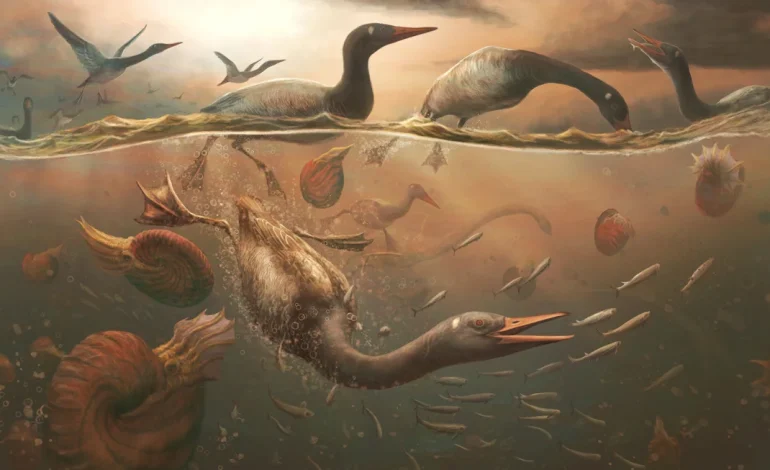Fossil Found in Antarctica Pushes Back Modern Bird Origins

A remarkably well-preserved skull fossil unearthed in Antarctica has revealed the oldest known ancestor of modern birds, a duck-like creature that lived alongside dinosaurs 68 million years ago, CNN reports.
The discovery, detailed in a new study published in the journal Nature, challenges previous assumptions about the timeline of bird evolution and sheds new light on how some species survived the cataclysmic asteroid impact that wiped out the dinosaurs.
The fossil belongs to Vegavis iaai, an extinct species the size of a mallard duck that scientists now believe is a direct relative of today’s waterfowl, like ducks, geese, and swans. While Vegavis was first described two decades ago, skepticism lingered about its status as a true “modern” or “crown” bird species, largely due to the incomplete nature of previous fossil finds.
Crucially, unlike previous Vegavis specimens, the newly discovered fossil includes a nearly complete skull. This allowed researchers to identify key characteristics of modern birds, such as a toothless beak and an enlarged premaxillary bone in the upper beak – features previously unseen in birds from the dinosaur era.
Collected during a 2011 expedition by the Antarctic Peninsula Paleontology Project, the fossil was meticulously extracted from rock dating back 68.4 to 69.2 million years. Using computerized tomography (CT) scanning, researchers created a detailed three-dimensional reconstruction of the skull, revealing not only its external features but also the shape of its brain – another indicator of modern bird characteristics.
According to O’Connor, the sum of these features firmly places Vegavis within the group encompassing all 11,000 bird species we see today.
While Vegavis shares similarities with contemporary waterfowl, the study also reveals some intriguing differences. The skull indicates a slender, pointed beak powered by enhanced jaw muscles, suggesting a diet and hunting strategy more akin to diving birds than typical ducks.
The discovery of Vegavis in Antarctica, coupled with the earlier finding of another extinct bird species, Conflicto antarcticus, from a nearby location dating from shortly after the dinosaur extinction, offers a unique opportunity for paleontologists to study how some animals managed to survive the devastating event.









The latest news in your social feeds
Subscribe to our social media platforms to stay tuned